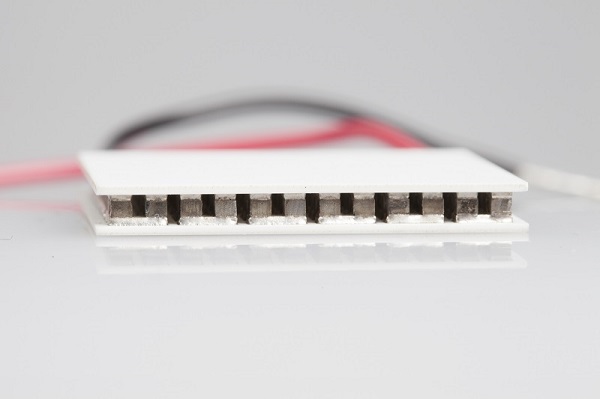
What is thermal energy harvesting?
01.04.2015
Part 1 of our interview with Dr John Allen on thermal energy harvesting
“Thermal energy harvesting is the process of capturing heat which is either freely available in the environment or which is waste energy given off by engines, machines and other sources and putting it to use. Thermal energy which is harvested may be used as heat to pre-heat water for domestic use or industrial processes. Alternatively, it can be converted into mechanical or electrical energy.”
“The form of thermal energy harvesting in which ETDYN is involved is the conversion of heat, or more precisely a temperature difference, into electrical energy using thermoelectric generators (TEGs). These rely on properties of a special class of semiconductors known as thermoelectric materials, which create an electric potential when thermal energy migrates through them from a hotter side to a colder side. These materials can also be used to pump heat from one side to the other by applying an electric current to them. Thermoelectric devices have the advantages of being compact, fairly light weight, solid state with no moving parts, silent in operation and requiring more or less no maintenance.”
What are the environmental benefits of using this technology?
“The main environmental benefit of this technology is reduced demand for energy production, in particular fossil fuel consumption, as it makes use of energy that is already present but not being utilised. In addition, they can extend the life of, or entirely replace, batteries which are not particularly environmentally friendly devices. In addition to recovering waste heat, these systems could also produce energy from heat sources in the environment that cannot be tapped by other methods.”
Can it save the world by solving the energy crisis?!
“Energy harvesting is not going to save the world or end the energy crisis, but it can make a valuable contribution toward it. The ability of this technology to tap energy sources that would otherwise go to waste can help reduce demand on other energy generation methods, in particular fossil fuel or nuclear power consumption.”
“Development is also under way on thermal energy storage systems. This technology could be combined with energy harvesting systems to capture heat when it is available to then release it and use it for heating or convert it to another form of energy on demand.”
Why aren’t thermoelectric generators used widely at present?
“At the moment the use of thermoelectric devices tends to be limited to niche and high value applications. This is because thermoelectric devices are relatively expensive and have a low energy conversion efficiency. For these reasons they tend to be reserved to applications where their advantages of compactness, low weight, durability and maintenance free operation outweigh their cost and low efficiency. In addition, the use of materials such as lead and tellurium in some thermoelectric materials may preclude thermoelectric devices from some industries and applications.”
“Developments are a foot on two fronts to address these limitations. On the one hand new thermoelectric materials and devices are being developed which offer lower cost and/or greater efficiency; on the other, new manufacturing processes are being developed to reduce the cost of the devices. In addition, developments are on-going to produce more environmentally friendly thermoelectric materials. ETDYN is working on a number of projects including PrinTEG, Prestege and ElectroTEG to develop faster and lower cost methods of automated thermoelectric device manufacture to replace the current labour intensive and expensive production processes. These projects are also exploring the use of more widely available, environmentally friendly and less expensive thermoelectric materials.”
This is part one of a two-part interview on thermal energy harvesting. For any further questions, including how a thermoelectric generator could replace a battery in your product, use thecontact form or e-mail us at info@etdyn.com.